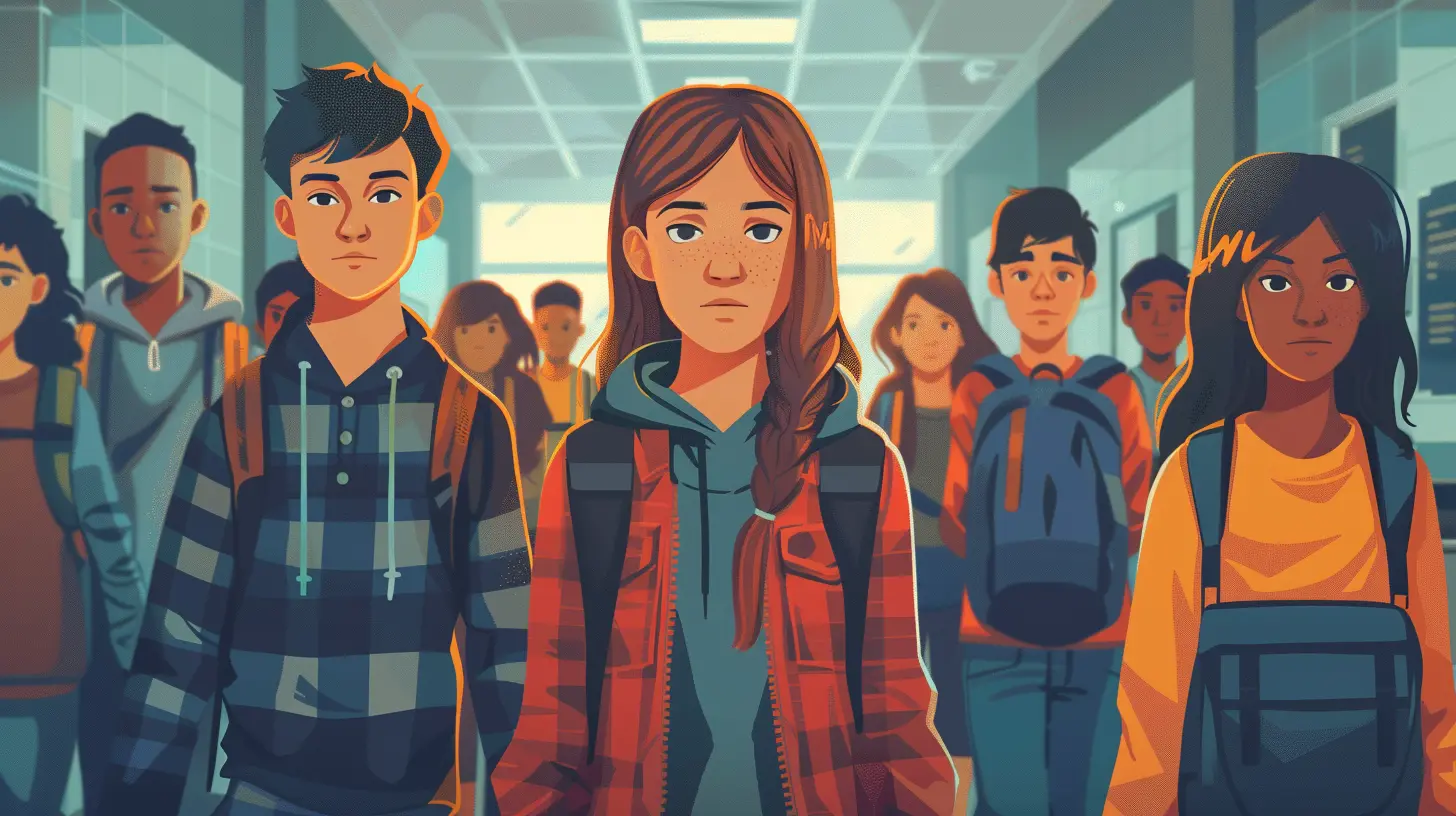How to Support Students Who Report Safety Concerns
19 July 2025
Let’s be real—schools are supposed to be safe havens. Places where students can learn, grow, and just be their quirky, curious selves. But sometimes, things go sideways. Whether it’s bullying, threats, or even something that just doesn’t feel right, students might step forward with safety concerns. And you know what? That takes guts. So when they do, we need to be ready—not just to listen, but to act.
In this article, we’re diving deep into how to support students who report safety concerns—what to do, how to respond, and how to create a school culture that makes speaking up the norm, not the exception. Whether you’re an educator, administrator, or support staff, this guide’s got your back.
Why It Matters When Students Speak Up 🙋
Imagine this: a student notices a disturbing note scribbled in a textbook. It could be a joke, sure—or it could be something more. Now, if that student feels too afraid, unsure, or flat-out ignored to report it, we might lose our chance to prevent something serious.Supporting students who raise safety issues isn’t just about reacting; it’s about reinforcing trust, strengthening community, and showing every student their voice matters. Because when one brave student speaks up, they might just be saving a life.
Start with Trust: Building a Safe Reporting Culture 🧱
Before we even get into the “how-tos,” let’s talk about the vibe on campus. If your school culture doesn’t make reporting feel safe, nothing else we say will truly stick.1. Normalize Speaking Up
We’ve got to remove the stigma around reporting. In many schools, students worry they’ll be labeled as “snitches” or face social backlash. Address that head-on.- Embed discussions about safety and reporting in classroom conversations.
- Use positive language: “looking out for others” instead of “telling on someone.”
- Share stories where speaking up made a difference.
2. Train Staff to Respond Supportively
A student may only report something once. Blow them off, and they might never come forward again.- Train all staff—teachers, cafeteria workers, bus drivers—to take every concern seriously.
- Use active listening: eye contact, nodding, asking clarifying questions.
- Avoid dismissive phrases like “Are you sure?” or “That doesn’t sound like a big deal.”
Immediate Response: What To Do When A Student Reports A Concern ⏳
Okay, let’s say it happens. A student confides something serious. Time to act—but also, act wisely.3. Stay Calm and Focused
First, check yourself. Even if the concern is major, your reaction sets the tone.- Speak calmly and avoid showing shock.
- Reassure the student: “You did the right thing by telling me.”
- Don’t promise confidentiality you can’t keep. Instead, say, “I may need to involve others to make sure everyone stays safe.”
4. Gather Essential Information
You don’t need to play detective, but you do need the basics:- Who was involved?
- What happened?
- When and where did it occur?
- Were there any witnesses?
Keep questions open-ended and non-threatening. Remember, they’re not on trial—they’re asking for help.
5. Document the Report Immediately
Write it down. Every detail. Right after the student leaves. This isn’t just for memory’s sake—it’s crucial for any investigation or follow-up actions. Stick to facts, not guesses.
After the Report: What Happens Next? 🔍
Now that you’ve got the concern in hand, it’s time to take real action.6. Activate Your School Safety Protocol
Every school should have a crisis or safety response plan. If you don’t know yours, make this your wake-up call to find out.- Report to the appropriate administrator or safety team.
- Ensure the concern is logged in your school’s incident tracking system.
- If it’s a serious threat (self-harm, violence, abuse), notify the proper authorities immediately.
7. Protect the Reporting Student
This part is so often overlooked, yet it’s critical. Students fear retaliation—and rightly so.- Keep the student’s identity confidential whenever possible.
- Monitor any potential harassment or bullying following the report.
- Offer counseling or a supportive adult they can check in with.
Building a Longer-Term Support System 🤝
Reacting well in the moment is important—but what are we doing all the other days of the year?8. Create Anonymous Reporting Options
Sometimes students aren’t ready to attach their name to a concern—and that’s okay.- Use dropboxes, hotlines, or digital reporting tools.
- Make sure students know how to use them and what happens next.
- Monitor these systems regularly and respond promptly to every submission.
9. Provide Mental Health Support
When students feel safe emotionally, it’s easier for them to speak up about physical safety. And let’s not forget—those reporting serious issues might be carrying trauma themselves.- Bring in school counselors, social workers, or psychologists.
- Offer group sessions or peer-led support clubs.
- Train staff on trauma-informed practices.
Communicating with Parents and Guardians 📞
Yup, this part can get tricky—but it’s essential.10. Be Transparent, Not Alarmist
Parents want to know what’s going on—but they don’t want panic. Keep communication clear and professional.- Reach out directly if their child is involved.
- Explain what actions are being taken to ensure safety.
- Remind them of your school’s values and response protocols.
Continuous Improvement: Make Reporting a Living System 🔄
Safety isn’t a one-and-done task. It evolves, and so should your system.11. Review Every Incident
After any safety report, take time to debrief. What went well? What could’ve gone better?- Meet with the safety team monthly (at least).
- Analyze trends—are concerns coming from certain grades or areas?
- Use those insights to adjust policies or increase staff presence in certain zones.
12. Ask for Student Feedback
Here’s a wild idea... ask the people you're trying to protect how you’re doing. Shocking, right?- Survey students about how safe they feel.
- Ask if they know how to report concerns.
- Use their input to make real changes—not just check a box.
Empowering Students to Look Out for Each Other 🧠💬
One of the most powerful things you can do is turn every student into a safety advocate.13. Role-Play and Scenarios
Run through what reporting actually looks like. Not in a boring lecture—make it real.- Use scenarios in health or advisory classes.
- Practice “what would you do?” moments.
- Show students how to spot red flags and speak up.
14. Celebrate the Courage to Speak Up
Let’s flip the narrative. Reporting isn't weakness—it’s strength.- Highlight anonymous heroes (with permission).
- Use school assemblies or announcements to reinforce the importance of standing up for safety.
- Reward responsible reporting through student recognition programs.
Final Thoughts: It’s About Trust, Not Just Protocols 🔒
At the end of the day, supporting students who report safety concerns isn't just about following rules—it's about building relationships. Students need to know that adults will believe them, stand by them, and take real steps to protect them.So, whether you're a teacher with 20 years under your belt or a newbie just trying to keep your classroom in order, remember this: one small act of support can change a student’s entire sense of safety.
Be the adult they can count on. That’s how we build schools where every voice matters—and every student knows they’re not alone.
all images in this post were generated using AI tools
Category:
School SafetyAuthor:

Bethany Hudson
Discussion
rate this article
1 comments
Kira Kirkland
Thank you for shedding light on this crucial topic. Supporting students who voice safety concerns is vital for fostering a trusting environment. Your insights will inspire educators to take meaningful actions for their students' well-being.
August 5, 2025 at 3:59 AM

Bethany Hudson
Thank you for your kind words! I'm glad you found the insights helpful for promoting student safety and trust.


